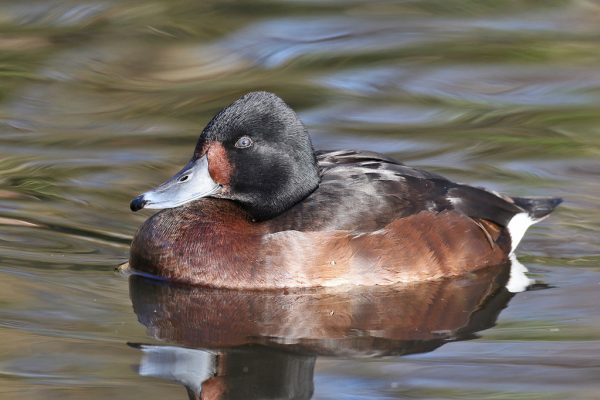-
Scaly-sided Merganser Single Species International Action Plan – 2nd workshop
by EAAFP Scaly-sided Merganser Task Force Scaly-sided Merganser Task Force workshop on the 2nd workshop will be held on 23-25 September 2015 in Vladivostok, Russia. (1) sign off the Single Species International Action Plan; (2) provide direction for national Action Plans; (3) coordinate surveys within key states; and (4) provide direction to conservation breeding […]
Continue reading -
10,000 Relict Gulls
by Terry Townshend It was as recently as 1970 that RELICT GULL (Larus relictus, ??) was confirmed as a valid species. Before that it was thought to be either an eastern race of Mediterranean Gull (Ichthyaetus melanocephalus) or a hybrid between Brown-headed Gull (Chroicocephalus brunnicephalus) and Pallas’s Gull (Ichthyaetus ichthyaetus)! Since its rather late acceptance into the global ornithological fold […]
Continue reading -
Chinese Ambassador farewells godwits
Friday, 20 March, 2015 The Chinese Ambassador to New Zealand visited the Pukorokoro Miranda Shorebird Centre on the Firth of Thames today (Friday March 20) to watch bar-tailed godwits and red knots that are flying to China on the way to their breeding grounds in Alaska and Siberia. Ambassador Wang Lutong watched the godwits and […]
Continue reading -
Identification of Baer’s Pochard (Aythya baeri) and Baer’s-type Birds
Written by Dr. Nial Moores of Birds Korea As part of the fledgling Species Action Plan and Task Force (under the EAAFP), we were asked by the coordinator to collate records of the now Critically Endangered Baer’s Pochard Aythya baeri in Korea. We were able to trace about 20 records in the Republic of Korea (ROK) since 1994, […]
Continue reading -
Reclamation in the Yellow Sea is the main cause of the decline of the Spoon-billed Sandpiper (really)
Dr Nial Moores, Birds Korea, March 12th 2015 The Task Force News Bulletin 13 (February 2015), posted on the increasingly excellent EAAFP website, confirms that for now at least the rapid rate of decline of the charismatic and Critically Endangered Spoon-billed Sandpiper has leveled off. The evidence for this excellent news now comes from the breeding grounds, the staging areas […]
Continue reading -
AMBI Workplan Approved by CAFF Board
The Work Plan of the Arctic Migratory Bird Initiative (AMBI) was approved by the Conservation of Arctic Flora and Fauna (CAFF) Board on 12th February 2015, following input from Arctic Council Observer Countries: China, Republic of Korea and Singapore. The work plan runs from 2015 -2019 and identifies priority actions in all Flyways, including the […]
Continue reading -
Spoon-billed Sandpiper Task Force: News Bulletin No.13, February 2015
The 13th Spoon-billed Sandpiper Task Force (SBS TF) News Bulletin is downloadable here. The contents are as below. To read previous news bulletins and find out more about Spoon-billed Sandpiper, please visit our SBS TF page. Foreword from the Editor Russkaya Koshka expedition June 2014 – first positive trends in the breeding grounds Ringing SBS at stopover […]
Continue reading -
Relevant Scientific Articles updated in Feb 2015
If you need full scientific articles, please contact Dr Judit Szabo, the science officer. ANATIDAE O’Neal, B. J., J. D. Stafford, and R. P. Larkin. 2015. Migrating ducks in inland North America ignore major rivers as leading lines. Ibis 157:154–161. Anderson, H. B., J. Madsen, E. Fuglei, G. H. Jensen, S. J. Woodin, and R. […]
Continue reading -
Mapping East Asia’s disappearing tidal flats
Written by Nick Murray Who speaks for the tidal flat? There are many voices for the mangrove forest, the coral reef and the seagrass meadow, but the chorus for the mud, sand and silt flats that sit hidden under shallow water for most of the tidal cycle is often silent. Not only do hundreds of […]
Continue reading -
Migratory birds’ fuelling station empty
Read in ohter languages: Millions of Australia’s migratory shorebirds are being pushed closer to extinction as the quality of their primary feeding grounds, or ‘refuelling areas’, in East Asia continue to decline. New research has declared the main refuelling areas in the Yellow Sea at risk of total collapse as coastal development, widespread pollutants, dead zones, increasing […]
Continue reading


